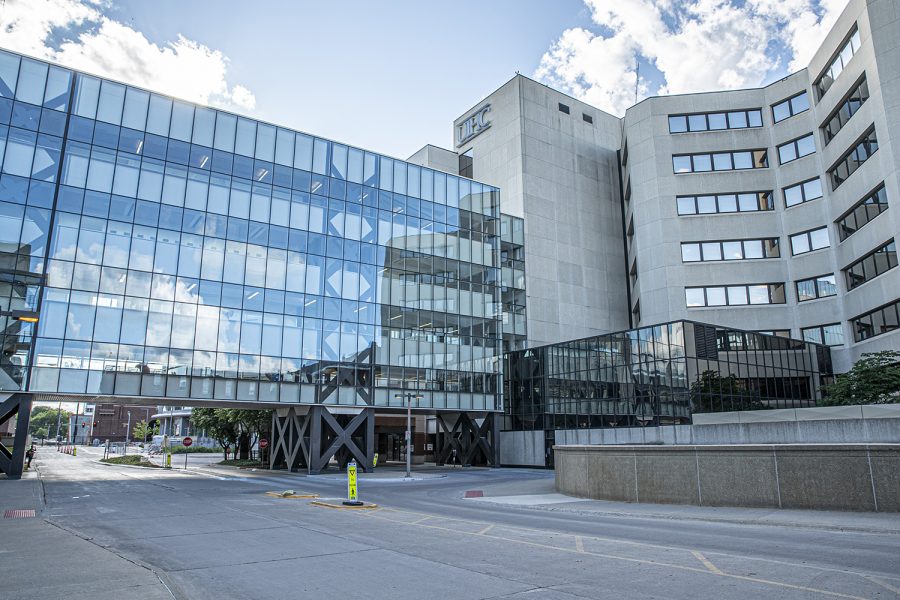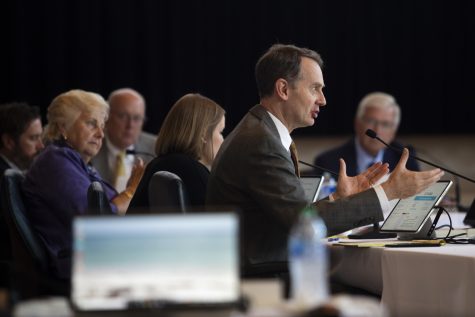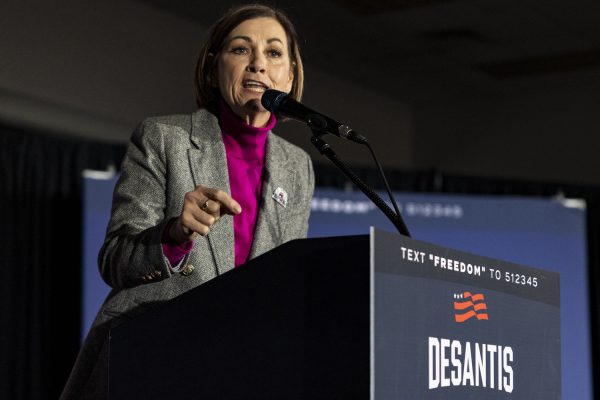University of Iowa doctors monitor and help COVID-19 patients remotely
Doctors at UIHC created a program to help track and monitor symptoms of patients recovering from COVID-19 at home.
University of Iowa Hospitals and Clinics are seen on Tuesday, June 23, 2020.
June 29, 2020
A team of doctors at University of Iowa Hospitals and Clinics have created a program to monitor people with COVID-19 from the comfort and safety of the patients’ homes.
The UI Health Care’s Home Treatment Team is co-run by Clinical Assistant Professors of Internal Medicine Andrew Bryant and Bradley Manning.
“We created the Home Treatment Program to allow for us to monitor, treat, and safely remain in contact with COVID-19 patients who were not able to come and be treated at the hospital,” Bryant said.
He said the program has proven successful with a 99.7 percent recovery rate and one death being reported.
“While similar programs have been created in certain major cities and some major universities, the University of Iowa still has one of the best and most comprehensive home treatment programs for COVID-19 patients,” Bryant said.
Spokesperson for UI Health Care Jennifer Brown said in an email to The Daily Iowan that the program monitored more than 525 patients in May.
“More than 320 patients recovered and have been discharged from home monitoring, and only 9 percent of patients being monitored through the program have been admitted for inpatient care,” Brown said.
RELATED: Johnson County hospitals on ‘high alert’ for potential uptick in COVID-19 cases
Bryant said the program is able to help patients remotely by checking on them through phone calls and giving them equipment to conduct certain tests themselves and report their results back to a doctor.
All COVID-19 patients who are interested in the program are enrolled, Brown said in the email, including patients who have been discharged from the hospital and those who tested positive as outpatients.
Brown said patients receive a home monitoring kit with a blood pressure cuff and pulse oximeter, and staff from the Home Treatment Team call patients every 24 to 72 hours for an average of 15 days.
“Patients often worsen around day 10, so this extended monitoring period enables providers to better help patients manage their recovery or instruct them to go to the hospital for necessary care,” she said.
Patrick Hartley, a clinical professor of internal medicine at the UI, utilized the program when he and another member of his household tested positive for COVID-19.
“Within four hours of me having reported that I had tested positive for the novel coronavirus, me and another member of my family who had tested positive a few days earlier were contacted by the Home Treatment Program and we were very soon sent devices to check our blood pressure, and our oxygen levels, and we were advised to drink plenty of fluids,” Hartley said.
Bryant said the Home Treatment Team is prepared for the return of students, faculty, and staff to campus in the fall.
“We are prepared for any enlargement in patient size we will face in the fall and we will monitor any student or member of the faculty who cannot be placed in the hospital,” he said.

















